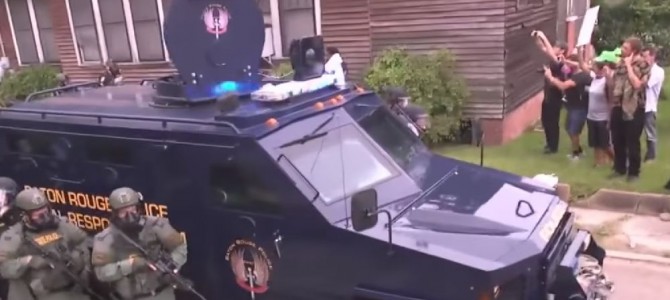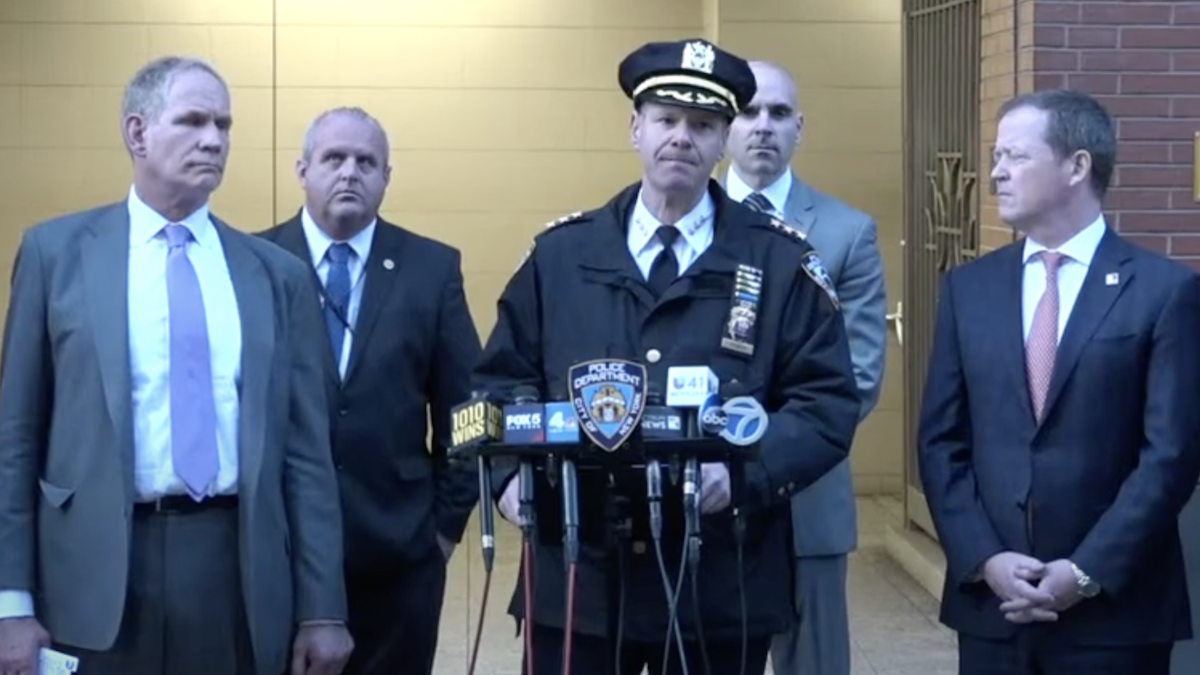
When the Ferguson riots broke out in 2014, the nation was shocked and alarmed. The press gave the event wall-to-wall coverage for a week. For young people this was fairly new territory, while older people had flashbacks to the Los Angeles riots of 1992, or even (if they were old enough) the Watts riots of 1965. These were alarming connections. Weren’t we past all this stuff?
The Baltimore riots in 2015 were a bit less shocking. This was a movie we’d all just seen. By the time we got to Charlotte, the element of surprise had been completely lost. Deadly race riots are starting to take on the banality of “same old, same old.” I’ve actually started looking forward to winter as a less riot-friendly season. It’s pretty depressing that we’ve reached the point where that line of thought makes sense.
Here’s the real tragedy of Ferguson, Baltimore, Milwaukee, Charlotte, and any other cities that haven’t yet been sacked but soon may be. Taken in themselves, the problems that drive this frustration are reasonably soluble. Unfortunately, just about everyone seems to prefer narrative-peddling to problem-solving. It’s easier and more fun.
As we all double down on our rightness, soluble problems morph into massive, mangled webs of anger and angst, and American cities go on burning.
America Is Not Drowning in Crime
Here’s the basic reality. Crime rates in America have gone down quite a bit since the 1980s and 1990s. Nevertheless, we still have relatively high rates of violent crime compared to other Western nations, and our murder rate has ticked up a bit over the past year.
Crime is again bubbling up as a domestic concern for ordinary American voters. At the first presidential debate, Donald Trump gave a mostly incoherent speech on crime, in which he took care to use the words “law” and “order” repeatedly, obviously signaling that he wishes to inherit the mantle of law-and-order conservatism. Those memes had been fading from the conservative electoral playbook, so Trump’s ham-fisted attempts at reviving them are worthy of comment.
Most people fail to understand that crime is quite a localized problem in America. There are places where murder is rampant, and places where it’s shocking and rare. That’s partly related to gangs, which are turf-oriented such that you pretty much know where to find them.
Actual gang murders are just one piece of the puzzle, though. In some neighborhoods, the social fabric has decayed, and bad blood between police and residents goes back many years. Solving crimes is challenging when residents are afraid of being labeled “snitches.” Cops get frustrated, and some start bending the rules. Relations deteriorate further.
It’s understandable that residents of these neighborhoods are frustrated. It’s tough to grow up in a place where you regularly feel unsafe. It’s hard feeling that you (or your kids) are seen as suspicious every time you wear a hoodie or have something bulky in your coat pocket.
Still, we should understand that this is not most of America. We’ve heard a lot lately about elite “bubble dwellers” who can’t understand the problems of ordinary people, but with respect to violent crime, it might be more accurate to see these sorts of neighborhoods as “bubbled.” Crime is still a problem in America, but it isn’t the sort of pervasive problem that’s driving people into gated-community islands of safety. In most places, our police are doing a pretty good job.
Crime Control Problems Are Soluble
That’s the first piece of good news. The second is that we’ve made significant advances in crime control over the past 20 years. Research and data analysis have given us vastly improved analytics, enabling us to direct resources to criminal hot spots. Better surveillance and communication reduces response times. Advances are also being made in training methods that help police to respond more appropriately to addicts, juveniles, and the mentally ill.
In many areas, improved transparency for police departments is also warranted. Unions and corrupt officials have enabled bad policing practices to become entrenched especially in many urban areas that have for decades been under near-exclusive Democratic control. In some cities (most obviously Chicago), law enforcement needs some restructuring and rebranding. But even in Chicago, substantial improvement should be possible, if we could think of the problem in terms of police transparency and crime control.
Unfortunately, it’s hard to fix anything in America today, when reform efforts are so easily hijacked by nefarious national narratives.
A Problem of Misdiagnosis
Americans have a narrative problem. We just like our narratives way, way too much. We’re starting to fall prey to narrative-induced paralysis.
This problem has fairly deep historical roots, especially for the black community. Looking at our list of American heroes, what sorts of people do we find? In general, our most-prized moral exemplars are prophetic figures whose main social contribution was to speak truth to power.
Martin Luther King Jr. never had much of a head for policy, but he was a genius at making a moral point. In a similar mold, we lavish admiration on Mahatma Ghandi, the suffragettes, and heartstring-pulling writers like Upton Sinclair, W.E.B. DuBois, and Harriet Beecher Stowe. Americans just love our awareness-raisers. We like them enough that we’re even sometimes willing to forgive certain lapses from Ghandi’s and King’s non-violent protest model.
In some cases, awareness-raisers really are heroic. (Jesus Christ is my personal favorite, although Elijah was also pretty great.) At other times, our obsession with awareness may actually blind us to the real solutions. Not every problem comes back to a widespread deficiency of human concern.
What if most Americans already agree that “black lives matter”? What if our policing and crime-control problems actually call for some prudent policy adjustments, and not a nationwide lifting of hearts and minds? High-minded but ineffective solutions can often be worse than useless insofar as they deter people from focusing on what really needs to be done. If a friend has a headache, you offer him an aspirin first, not a Bible.
Black Lives Matter is currently giving us a heartbreaking tutorial in the consequences of misapplied social activism. Just a few months ago we could argue about the reality of “the Ferguson effect,” but now we seem to be hurtling forward to a point where every black victim of a police shooting is potentially seen as the next Rodney King. It’s no longer necessary to wait for the verdict, or even for basic forensic analysis. Hearsay is enough to start the looting.
Needless to say, these developments are creating an extreme crime control challenge for city officials. No cop wants his city to be the next Ferguson. But how can police chiefs send cops into high-crime neighborhoods without giving them leave to defend themselves against potentially deadly attacks? The longer-term consequences of that kind of undisciplined “demonstration” will be more gang-controlled neighborhoods, and more black deaths.
Meanwhile, if Black Lives Matter goes on demonstrating its disdain for relevant facts and procedures, more and more Americans will lose sympathy for the cause. Can a narrative kill you? In a way, maybe it can.
Leashing Our Unruly Narratives
I’m not trying to blame everything on liberals. Conservatives have narrative problems too. We have a bad habit of deflecting any criticisms of our justice system by playing the “Daniel Patrick Moynihan” card. Rather than discuss seriously whether our police, courts, or correctional policies would benefit from reforms, we’d prefer to talk about the collapse of the family and how this is mostly the fault of liberals and the welfare state.
This all makes perfect sense when you understand the twin policy arcs of the late twentieth century, along with their corresponding political narratives. Liberals responded to poverty and social decay with a spate of entitlement programs, while conservatives promoted aggressive law enforcement. Both approaches had some drawbacks (not necessarily equally serious), but naturally everybody prefers to discuss where the other guy fell short.
Moynihan’s argument that the welfare state would further destabilize the black family, thus locking millions in a crippling cycle of poverty and dysfunction, looks awfully prescient in hindsight. That’s somewhat beside the point, though, for addressing immediate crime-control problems. We’re not going to re-instill the traditional family model overnight. When conservatives talk about Moynihan in the wake of a controversial police shooting, liberals (understandably) read that as, “Nothing can actually be done here, but just so you know, this is all your fault.”
Moynihan’s analysis can be mostly true without being the most relevant truth for every circumstance. We could buy ourselves some credibility by taking an interest in shorter-term solutions for struggling neighborhoods. It’s easier to give lectures on family values when you’re already involved in the neighborhoods that need to hear them.
There are times when activism and high-minded moralizing really are effective catalysts for positive change. There are other times when the sermonizing just wastes time and energy that could be put into building things that work. Let’s fire the activists, and start hiring more good cops.









